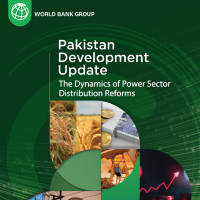The Pakistan Development Update (PDU) is the World Bank Pakistan flagship report that discusses the latest macroeconomic developments and policy issues that are critical to the country’s long-term economic development.
Below is a repository of the Pakistan Development Update biannual published reports.








